If you think LinkedIn is just about resumes and job hunting, think again. In today’s digital age, LinkedIn has become a powerhouse for professional networking, brand building, and thought leadership. But here’s the catch—standing out in the sea of content isn’t easy. And that’s where design comes in.
Think about it: When you scroll through your LinkedIn feed, what makes you stop? A well-crafted, visually appealing post or a plain wall of text? The answer is obvious. Design plays a critical role in grabbing attention, establishing credibility, and reinforcing your brand’s identity.
So, how do you design for LinkedIn in a way that captures attention and exudes professionalism? Let’s dive into some untold tips and tricks, infused with NLP (Neuro-Linguistic Programming) techniques for maximum exposure. And yes, we’ll use some engaging imaginary stories to bring the concepts to life!
The Power of Professional Design: A Tale of Two Posts
Meet Sarah and James. They’re both marketing professionals who want to share insights on LinkedIn.
Sarah writes a brilliant post about the latest trends in digital marketing. But she only uses text—long paragraphs with no visual breaks. The content is strong, but as people scroll past, they barely notice it.
James, on the other hand, shares the same insights but pairs them with a sleek infographic. His post has clear headings, vibrant colors, and an eye-catching layout. As a result, more people stop to engage with his content.
Who do you think gets more visibility? James, without a doubt. His use of visual storytelling ensures his post gets noticed, shared, and remembered.
This brings us to our first key takeaway: Visuals matter.
1. Branding Through Consistency
Your LinkedIn presence should be instantly recognizable. Whether it’s your personal brand or a company profile, design consistency builds trust and credibility.
How to Maintain Brand Consistency:
✅ Use a uniform color scheme that aligns with your brand. ✅ Stick to a consistent font style across your posts. ✅ Design templates for different types of content (quotes, case studies, insights, etc.). ✅ Use the same logo and profile image across your LinkedIn assets.
When someone sees your content, they should immediately associate it with your brand. This makes them more likely to engage and remember you.
2. The NLP Trick: Words That Stick
Design isn’t just about visuals—it’s also about how you structure text within your designs. This is where NLP comes into play.
How to Apply NLP for Better Exposure:
- Use Power Words: Instead of saying, “Here are some tips,” say “Game-changing LinkedIn design secrets revealed!”
- Create Curiosity: Use phrases like “You won’t believe this LinkedIn design hack…”
- Call-to-Action with Emotion: Rather than “Comment below,” try “Tell us your biggest LinkedIn design challenge!”
NLP techniques make your text more engaging, leading to higher interaction and visibility.
3. Carousel Posts: The LinkedIn Storytelling Hack
LinkedIn allows you to create carousel posts, where users can swipe through multiple slides. This is an underrated way to tell a compelling story visually.
Example:
Imagine you’re an HR professional sharing hiring advice.
- Slide 1: “Struggling to attract top talent? Here’s why.” (Bold text, striking background)
- Slide 2: “The #1 mistake companies make in job postings.” (Simple icon with text)
- Slide 3: “How to fix it—3 proven strategies.” (Clear, bullet-pointed list)
By the end of the carousel, you’ve engaged the audience and delivered value in an interactive way.
4. Optimizing Profile & Cover Images
Your LinkedIn profile picture and cover image are prime real estate for personal branding.
Best Practices:
- Profile Picture: Use a high-quality, professional image with a clean background.
- Cover Image: Add your tagline, logo, or a call-to-action.
- Avoid clutter: Keep it simple but impactful.
A strong first impression can make all the difference in networking and building credibility.
5. Data Visualization for Thought Leadership
If you’re sharing statistics, don’t just type them out—visualize them.
For example, instead of: ❌ “70% of professionals say LinkedIn helps them grow their careers.”
Try: ✅ A sleek pie chart showing 70% in bold, contrasting colors.
Visual data is processed 60,000 times faster than text, making your insights more digestible and shareable.
6. Motion Graphics: The Future of LinkedIn Design
Static images are great, but motion graphics are even better.
Why?
- They grab attention faster.
- They make complex information easier to understand.
- They encourage longer engagement with your post.
For example, a short GIF showing the step-by-step process of creating a LinkedIn post can be more engaging than a long paragraph explaining it.
Final Thoughts: Designing for Impact
LinkedIn isn’t just about what you say—it’s about how you present it. Thoughtfully designed content makes you stand out, reinforces your brand, and increases engagement.
Key Takeaways:
✅ Keep your designs consistent with your brand identity. ✅ Use NLP-driven text to boost engagement. ✅ Leverage carousel posts for storytelling. ✅ Optimize your profile and cover images. ✅ Visualize data to enhance thought leadership. ✅ Experiment with motion graphics for maximum impact.
With these untold tips and tricks, you’ll be able to design for LinkedIn like a pro.
Now, over to you—what’s the biggest design challenge you’ve faced on LinkedIn? Drop a comment and let’s discuss!

